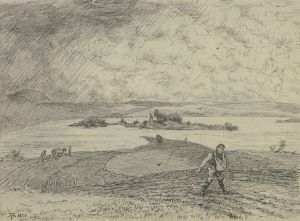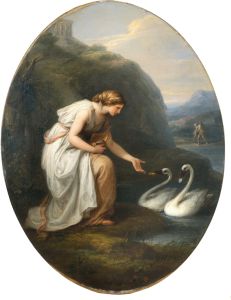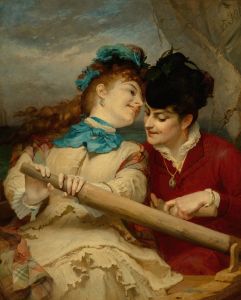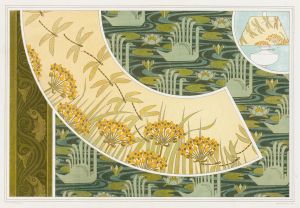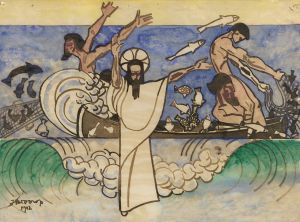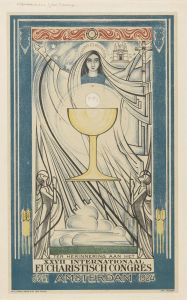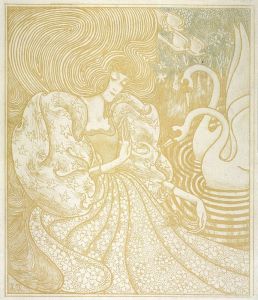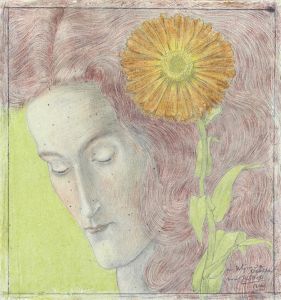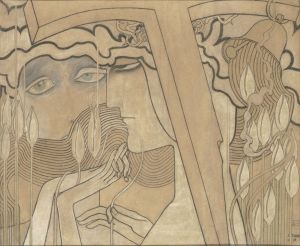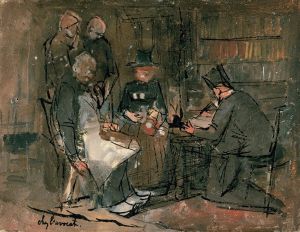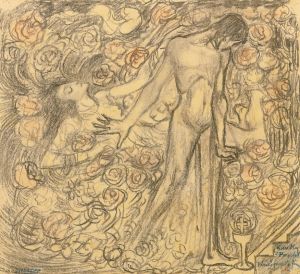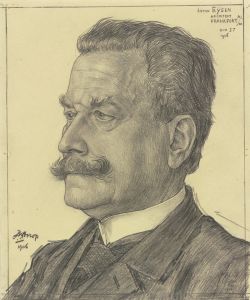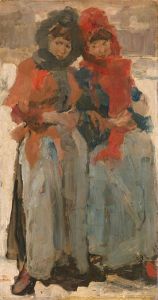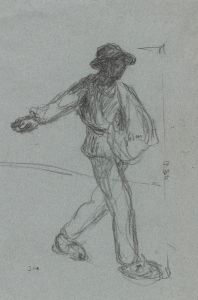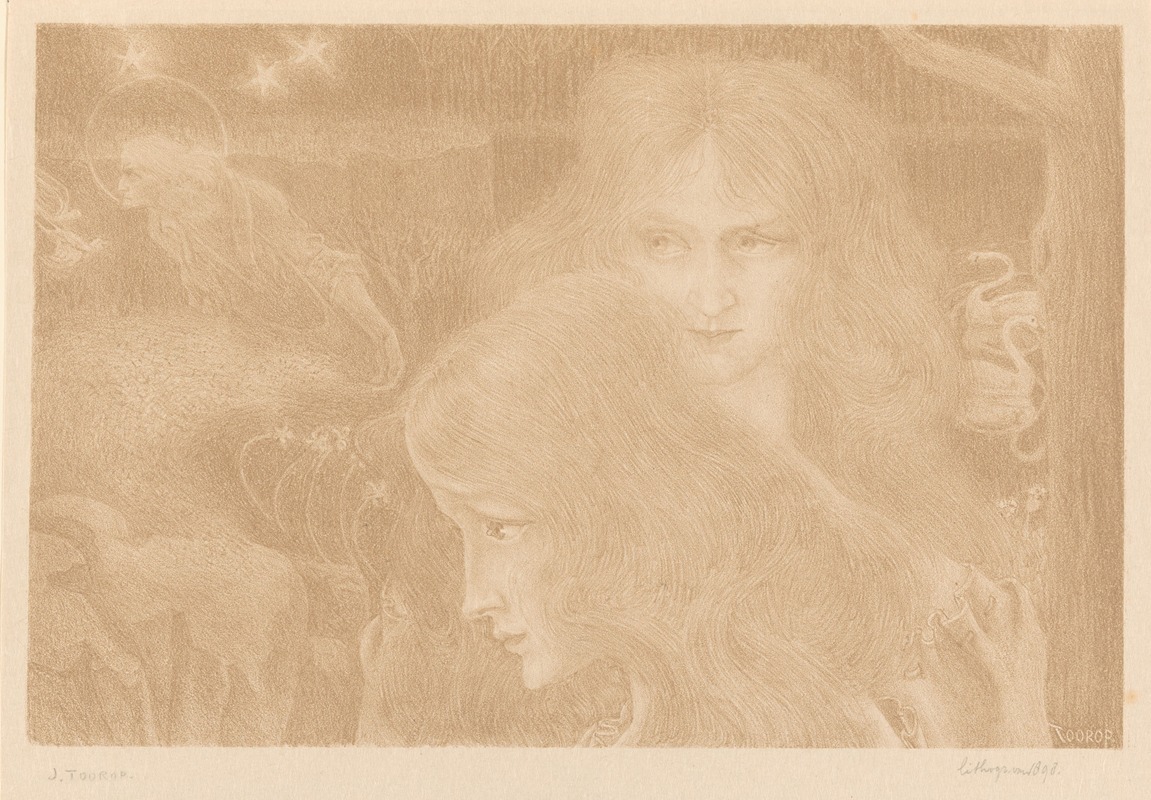
Twee jonge vrouwen, zwanen en een zaaiende oude man
A hand-painted replica of Jan Toorop’s masterpiece Twee jonge vrouwen, zwanen en een zaaiende oude man, meticulously crafted by professional artists to capture the true essence of the original. Each piece is created with museum-quality canvas and rare mineral pigments, carefully painted by experienced artists with delicate brushstrokes and rich, layered colors to perfectly recreate the texture of the original artwork. Unlike machine-printed reproductions, this hand-painted version brings the painting to life, infused with the artist’s emotions and skill in every stroke. Whether for personal collection or home decoration, it instantly elevates the artistic atmosphere of any space.
Jan Toorop's painting Twee jonge vrouwen, zwanen en een zaaiende oude man (translated as Two Young Women, Swans, and a Sowing Old Man) is a work by the Dutch-Indonesian artist Jan Toorop (1858–1928). Toorop was a prominent figure in the Symbolist and Art Nouveau movements, known for his distinctive style that often combined intricate line work, allegorical themes, and a blend of Western and Eastern artistic influences.
This particular painting reflects Toorop's Symbolist tendencies, where imagery is used to convey deeper, often spiritual or philosophical meanings. The composition includes two young women, swans, and an elderly man sowing seeds, elements that may carry symbolic significance. Swans, for instance, are often associated with purity, transformation, or the soul in art and literature. The act of sowing seeds by the old man could symbolize the passage of time, the cycle of life, or the planting of ideas or values for future generations. However, the specific interpretation of these elements in Toorop's work is not definitively documented.
The painting is characterized by Toorop's use of flowing, sinuous lines and a dreamlike quality, hallmarks of his Art Nouveau style. His works often exhibit a blend of European Symbolism with influences from his Javanese heritage, reflecting his upbringing in the Dutch East Indies (modern-day Indonesia). This cultural synthesis is a recurring theme in Toorop's art, contributing to his unique position within the Symbolist movement.
While the exact date of creation for Twee jonge vrouwen, zwanen en een zaaiende oude man is not widely documented, it is consistent with Toorop's mature period, during which he produced many works exploring themes of spirituality, human connection, and the natural world. Toorop's art often resonated with the broader Symbolist interest in exploring the unseen and the metaphysical through evocative imagery.
Jan Toorop's contributions to art have been recognized for their innovative style and thematic depth. His works are held in various museums and collections, primarily in the Netherlands, where he spent much of his life. However, specific details about the provenance or current location of Twee jonge vrouwen, zwanen en een zaaiende oude man are not readily available in public records.
This painting exemplifies Toorop's ability to weave complex, symbolic narratives into visually striking compositions, making him a key figure in the transition between 19th-century Symbolism and early 20th-century modern art movements.





